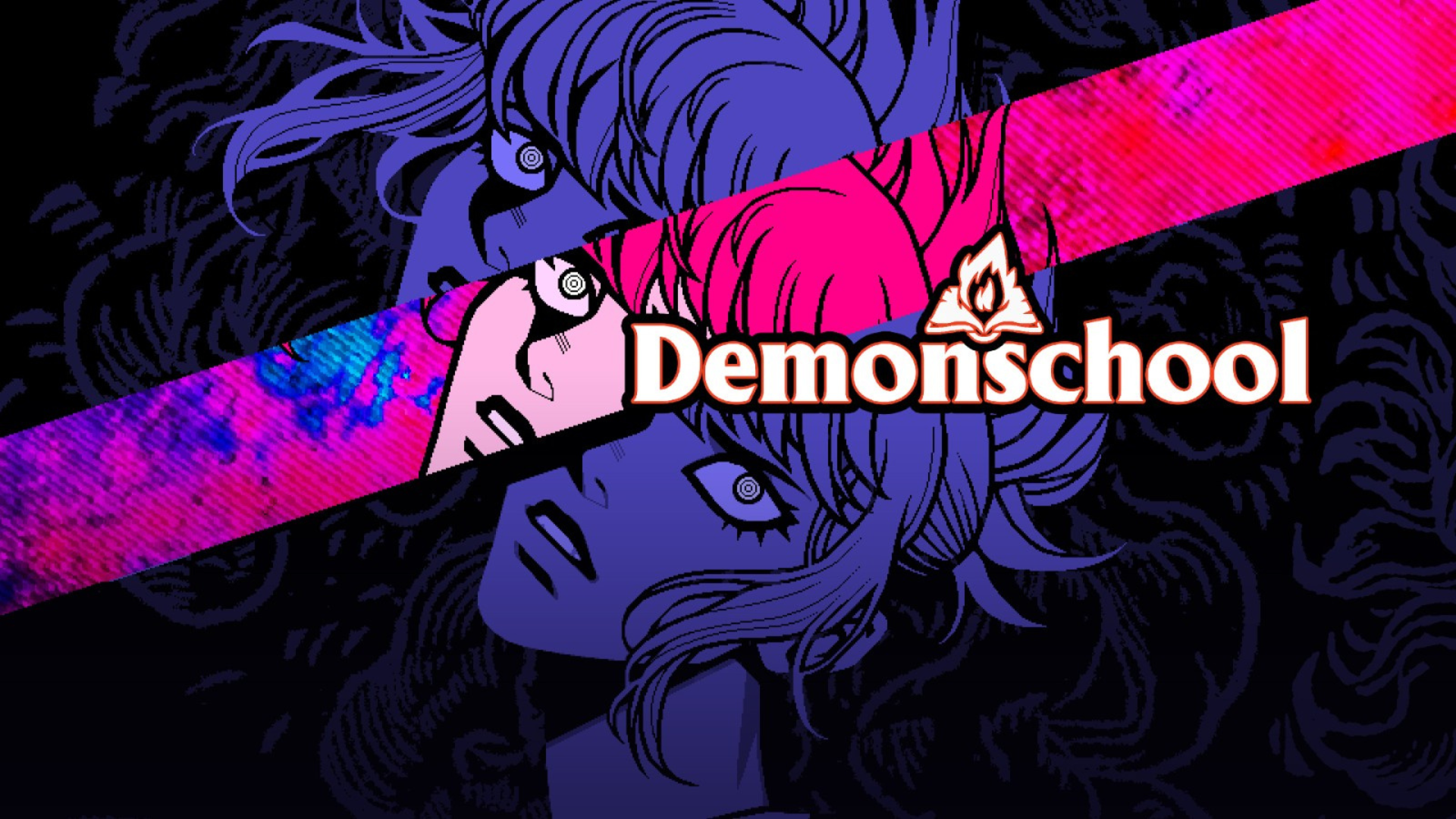
All the promotional materials for Demonschool immediately pointed out similarities to the Persona and Shin Megami Tensei games. While it’s generally best not to compare things, it’s hard to ignore those comparisons when the people making and selling the game keep emphasizing them.
I approach indie games that draw inspiration from classic JRPGs with a bit of caution. I don’t anticipate a perfect copy, so I try to keep my expectations realistic. Demonschool mentions influences from Atlus’ RPGs, and that’s clear in its school environment, how it uses a calendar, the focus on demons, and the way characters interact with each other.
While the game shares a setting with Persona and Shin Megami Tensei, it’s very different, particularly when it comes to fighting. This might disappoint fans of those series. I enjoyed Demonschool overall, mainly because of its witty and fast-paced story. However, the battles became repetitive, and the lack of character progression left me feeling bored at times.
Welcome To A Demonic School
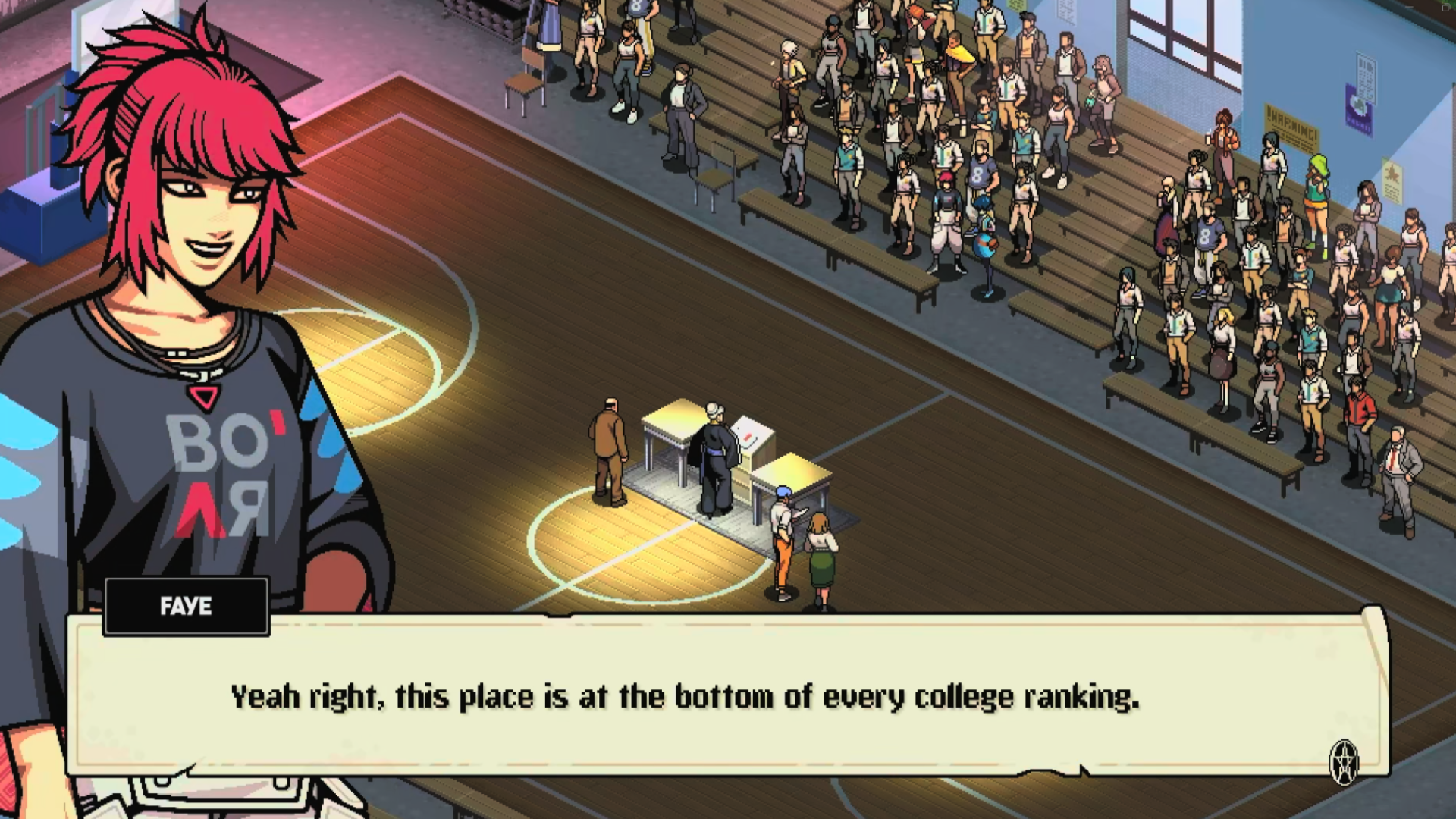
Demonschool is set in 1999 on the remote island of Hemsk. A group of students arrive to study, but quickly become entangled in a dangerous plot involving demons. The main character, Faye, is a self-described Demon Hunter and one of the few people on the island determined to stop the demonic forces. She’s presented from the beginning as unpredictable and chaotic, driven solely by her desire to destroy all demons.
Faye is so focused on demon hunting that she recruits anyone who shows potential. This doesn’t go unnoticed by the school, who secretly gives her missions to shut down demonic portals and keep the creatures from invading the island. Essentially, the game revolves around killing demons to save the world.
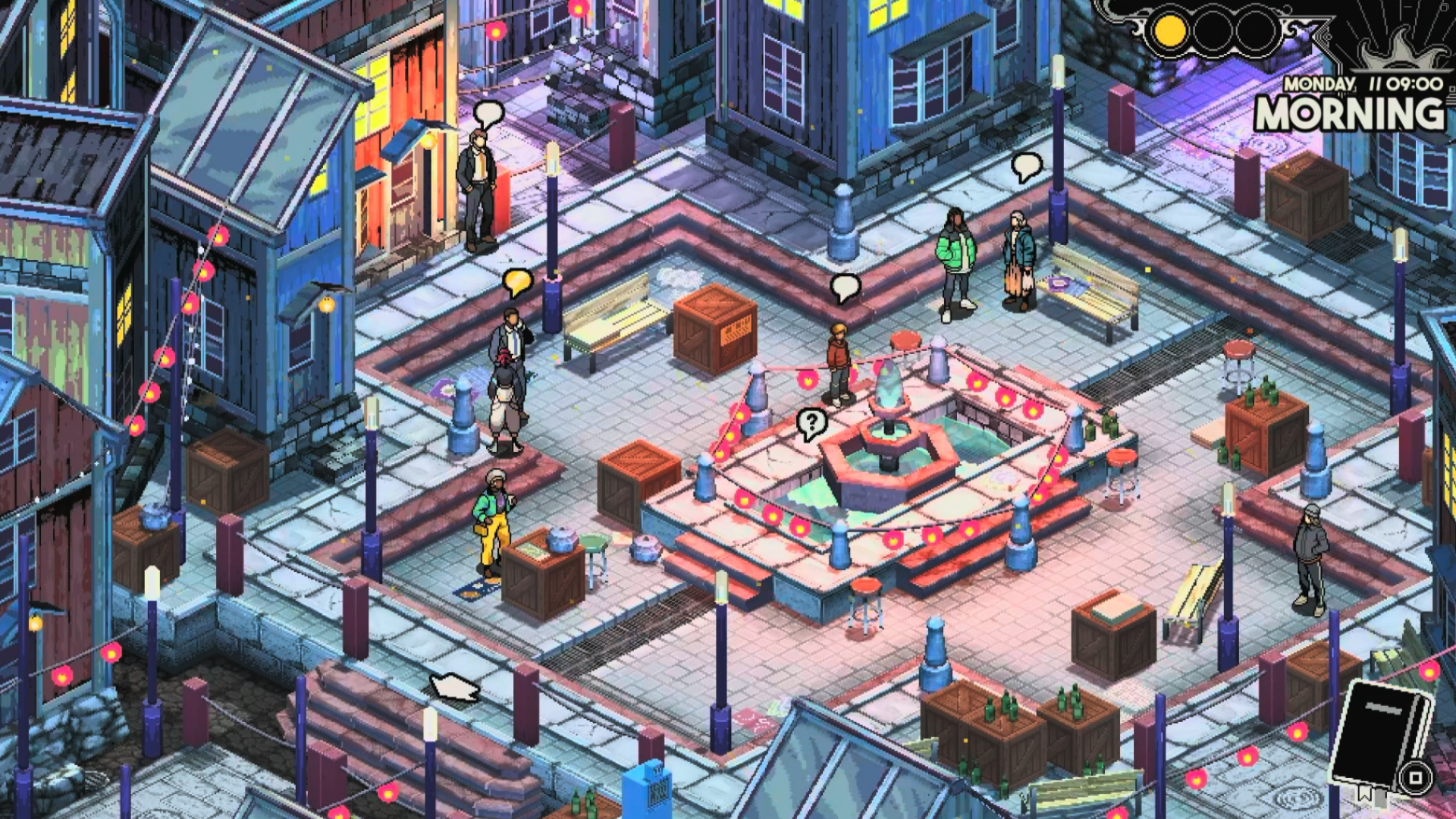
We have 11 weeks to complete everything, and the game’s calendar system helps manage that. Luckily, the time limit isn’t strict – time only progresses when you work on the main story. You can see all the available things to do in each area through a menu, and I encourage you to explore and repeat activities as much as you like.
Although the main story is simple, the way the narrative unfolds was often unexpected, particularly considering the characters. The best part of Demonschool is easily its cast. There are over 10 characters you can recruit, and each one has a unique and wonderfully strange personality that shines through, even in dark moments.
A Hell Of A Good Cast
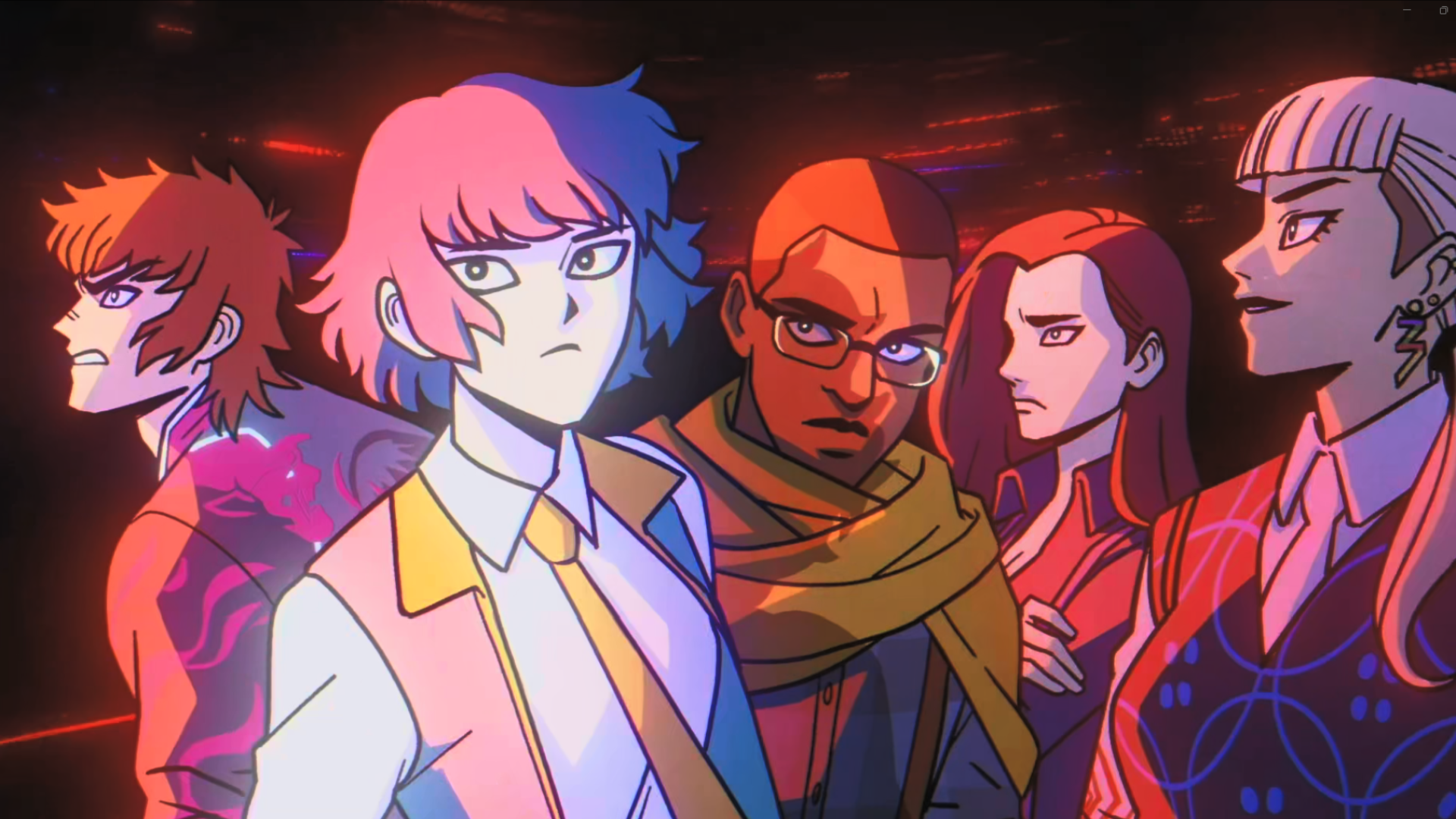
Initially, the characters’ calm reactions seemed strange, given the demon massacre happening around them. But once I understood the game was deliberately portraying these threats as ridiculous, I started to enjoy it. While there’s still a sense of danger and worry within the group, if everyone acted completely realistically, they’d quickly become boring. This unusual approach is what makes Demonschool so appealing.
Getting to know the characters best happens through the game’s relationship system. Faye can make choices that strengthen her bond with different characters. However, this system feels underdeveloped – it’s easy to quickly max out everyone’s affinity by repeatedly playing simple mini-games like karaoke or cooking. Once you’ve reached maximum affinity, you unlock side quests with each character, which reveal more about their personality and history.
Optional activities like side quests and mini-games don’t affect the game’s timeline, meaning you only miss out on extra abilities or storylines if you actively choose not to pursue them. I tried to complete everything before finishing the main story, which made the experience much richer. However, there were a few instances where completing a character’s questline revealed details about future events, breaking the narrative flow.

The game Demonschool primarily takes place on a single island, and its locations are revisited frequently. Surprisingly, this repetition helped me understand how the conflict grew and how demonic forces spread in a natural way. The characters I met changed their behavior as the story went on, and even the island itself seemed to evolve. The more I explored and interacted with the island, the more invested I became.
The game boasts a cast of over ten unique characters, each with a distinct and charming personality that shines through, even in the darkest moments.
The story’s clear and logical writing also makes it enjoyable. While the plot follows a predictable path, any surprises felt earned – either hinted at beforehand or explained in a way that made sense. This approach won’t appeal to everyone, particularly those who prefer traditional stories and serious characters, but I found it refreshing and unique.
The biggest issue with Demonschool isn’t its length – I finished all the content in about 25 hours. However, it felt much longer because the gameplay itself was quite boring, and I often found myself struggling to stay awake while playing. Getting through it to the end was the main challenge.
Combat That Overstays Its Welcome
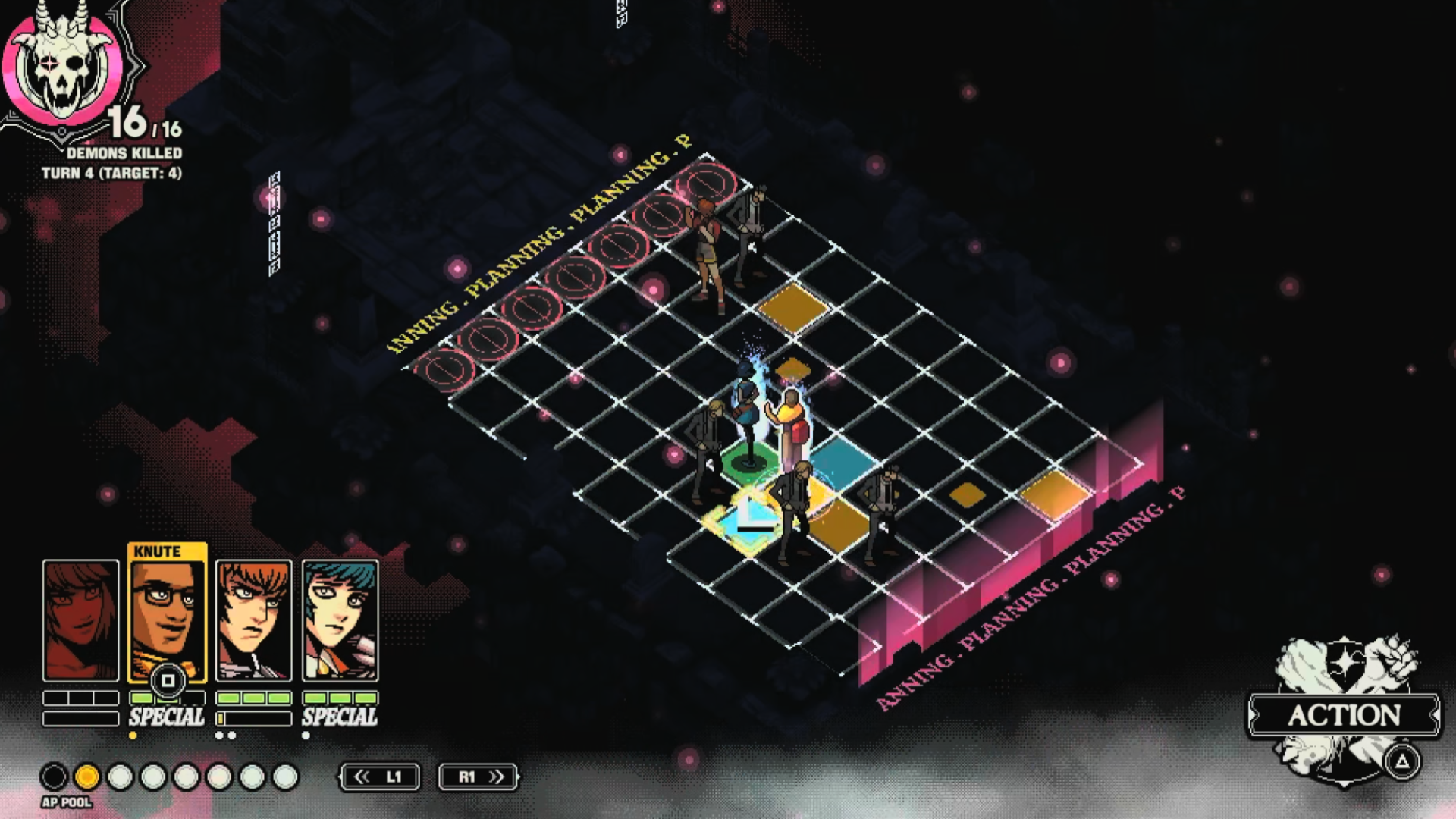
Demonschool accurately calls itself a tactical RPG. It really emphasizes strategy, so much so that when you first start playing, it feels more like solving puzzles than a traditional RPG.
During battles, characters move around on a grid, typically by four spaces at a time. If you move into an enemy, you’ll deal one point of damage and trigger a unique effect based on your character – this could be pushing the enemy back or pulling them closer. Enemies also deal one point of damage when they hit your characters, unless special abilities or elemental weaknesses are in play, which can change the amount of damage dealt.
Faye’s basic attacks push enemies back, which means she can damage multiple enemies if they’re lined up. This applies to her different attack types as well. In battles, my strategy was to position my team to hit as many enemies as possible while keeping a safe distance, and that was pretty much the whole plan.
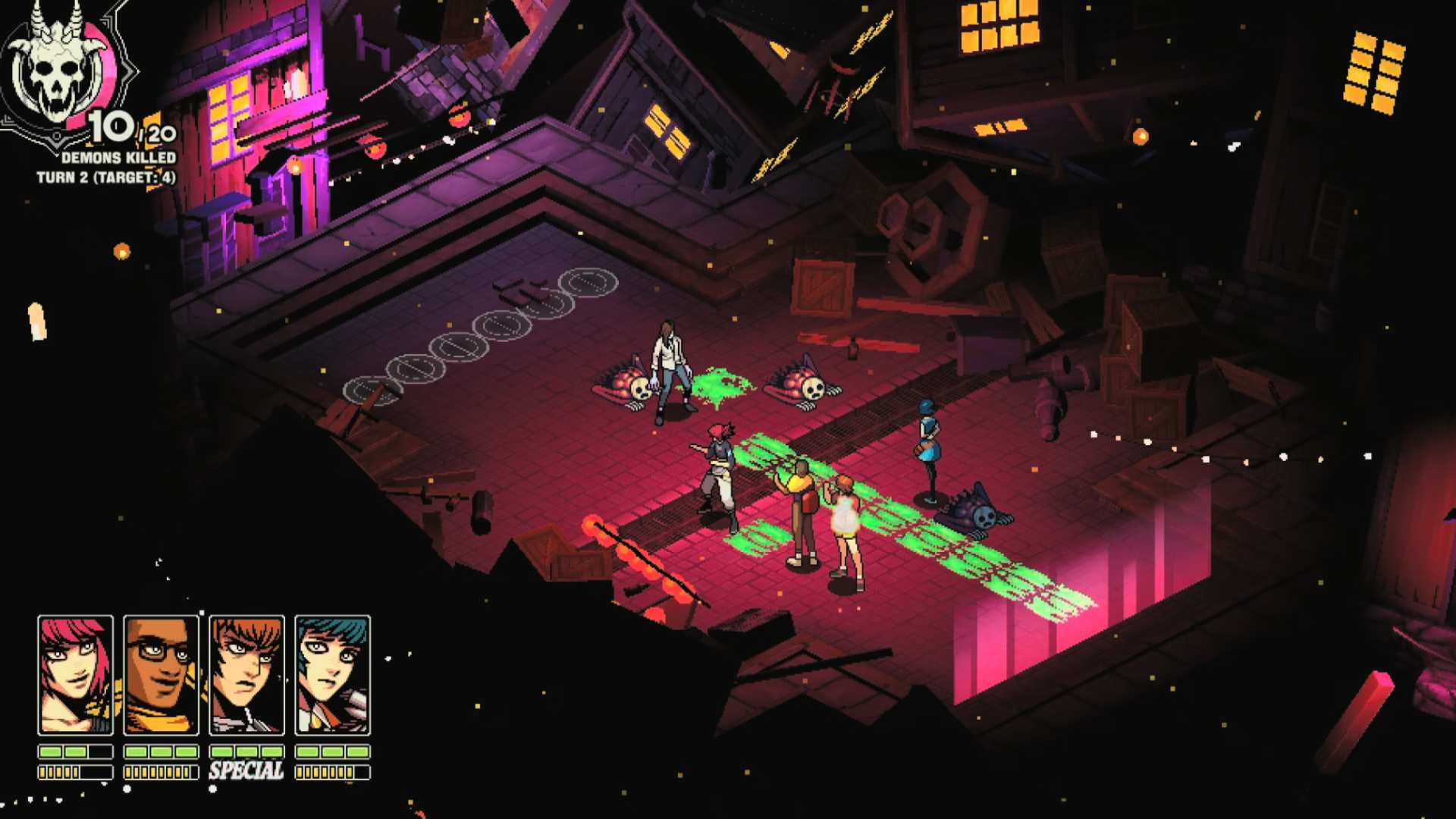
The combat stays pretty similar for most of the game, and you don’t see much variety in enemy attacks until you have a larger party – around ten members or more. For a long stretch early on, it’s frustratingly repetitive, with the same few demons and limited abilities. Honestly, if I wasn’t reviewing Demonschool, I probably would have stopped playing.
I finally reached the end of the game, but even though I encountered some interesting challenges – like unique battlefields and enemies with stunning attacks – I was already feeling exhausted. The problem is, almost everything in the game revolves around combat. There’s just so much fighting that it quickly becomes repetitive, and you end up facing the same enemies over and over, knowing exactly what to expect.
Demonschool encourages quick, skillful battles by giving players extra rewards for finishing fights fast and keeping all their characters alive. Earning top marks unlocks resources used to learn new abilities. However, players quickly accumulated so many of these resources that the incentive to carefully plan their teams and play perfectly disappeared.

I definitely enjoyed the challenging boss fights, particularly those that changed up the combat. However, the regular battles often felt pointless, even though they’re common in RPGs. This highlights the main issue: Demonschool’s RPG systems aren’t developed enough. Because of this, there isn’t much incentive to keep fighting and improving your character.
I really like how my party works in this game! Instead of leveling up, my characters get stronger by learning new abilities. After a battle, I get resources and something called opal, which is basically the money I use to unlock those abilities. Learning is pretty simple – I pick a couple of my characters, spend the resources, and they start studying. The only catch is they need a few days to rest after learning before they can study again, but it’s a cool system!
Demonschool’s RPG elements are too barebones.
Some skills were useful, but many didn’t make a difference in battles. This made the gameplay feel unrewarding and eventually led to boredom. I usually enjoy repetitive tasks in RPGs if I’m consistently seeing progress, but that wasn’t the case here. Battles quickly stopped being enjoyable and felt more like an obligation, something I only did to advance the story.
Exploration Is Restricted To The Island

Overall, that about sums up my experience with Demonschool. The writing – the story and dialogue – was actually quite funny. However, the gameplay and how you progress felt disappointing. Exploring the world fell somewhere in between – it wasn’t great, but not terrible either. While finding things didn’t offer amazing rewards, the side stories were worth checking out. The game mostly takes place on Hemsk Island, and exploring involves choosing a location from a menu and talking to people.
As I’ve been playing, I’ve noticed the game does a good job of making the world feel alive and like my actions matter. It’s not about huge changes, but little things. Like, there’s this shrine where I can donate coins each day, and the NPC actually remembers and the conversations change over time, sometimes even hinting at the bigger story. Some of the side quests also link together, forming little chains of up to three quests. It’s not the most innovative thing ever, but it really makes it feel like the world is constantly evolving and responding to what I do, which is cool.
Many of the game’s interactions and side quests end up being fights, and you usually get money or new skills as a result. Honestly, I sometimes missed the text-based parts, because the writing is often really funny. This just confirms what I think: while Demonschool has amazing writing, the gameplay itself isn’t as strong.
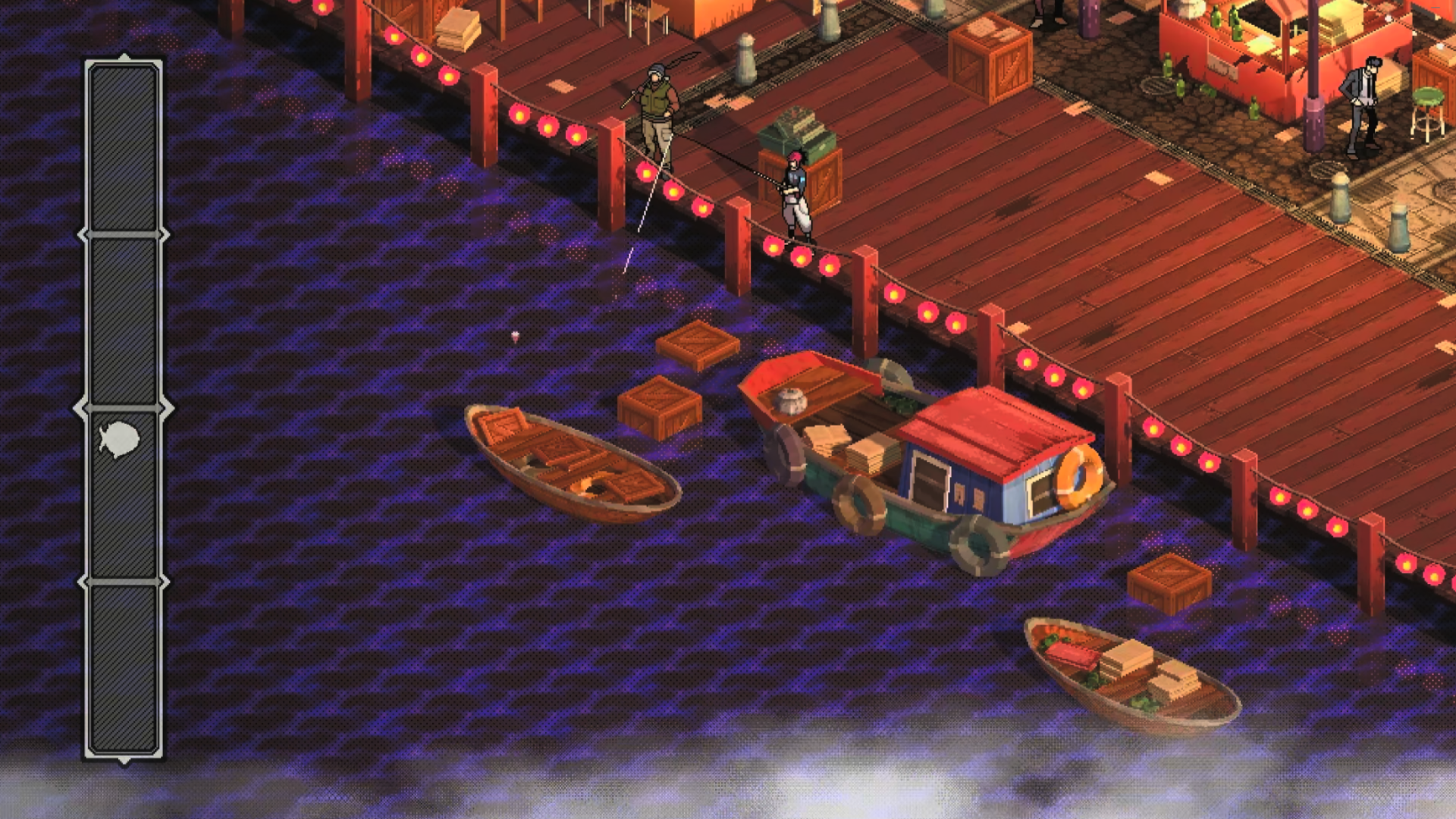
What’s wrong with enjoying a game just for its story? As someone who loves JRPGs, I don’t think there’s anything wrong with that at all, especially when the game has a strong artistic style, like Demonschool. The pixel art is full of personality, and even without a lot of moving parts, it creates a really effective feeling of something terrible about to happen.
I was really struck by the sound design in this game. There’s no one explaining what’s happening, so the music completely creates the mood. It’s super creepy, almost dreamlike, and definitely a bit sad. One minute it feels like you’re walking with the undead, and the next like you’re about to have a fancy dinner with Dracula! Honestly, it just nails the overall feeling and what the game is trying to do.
The game cleverly uses expressive character art and distinct sound effects to quickly show what characters are feeling and thinking. This is a smart way Necrosoft Games communicates emotions without relying on spoken dialogue.
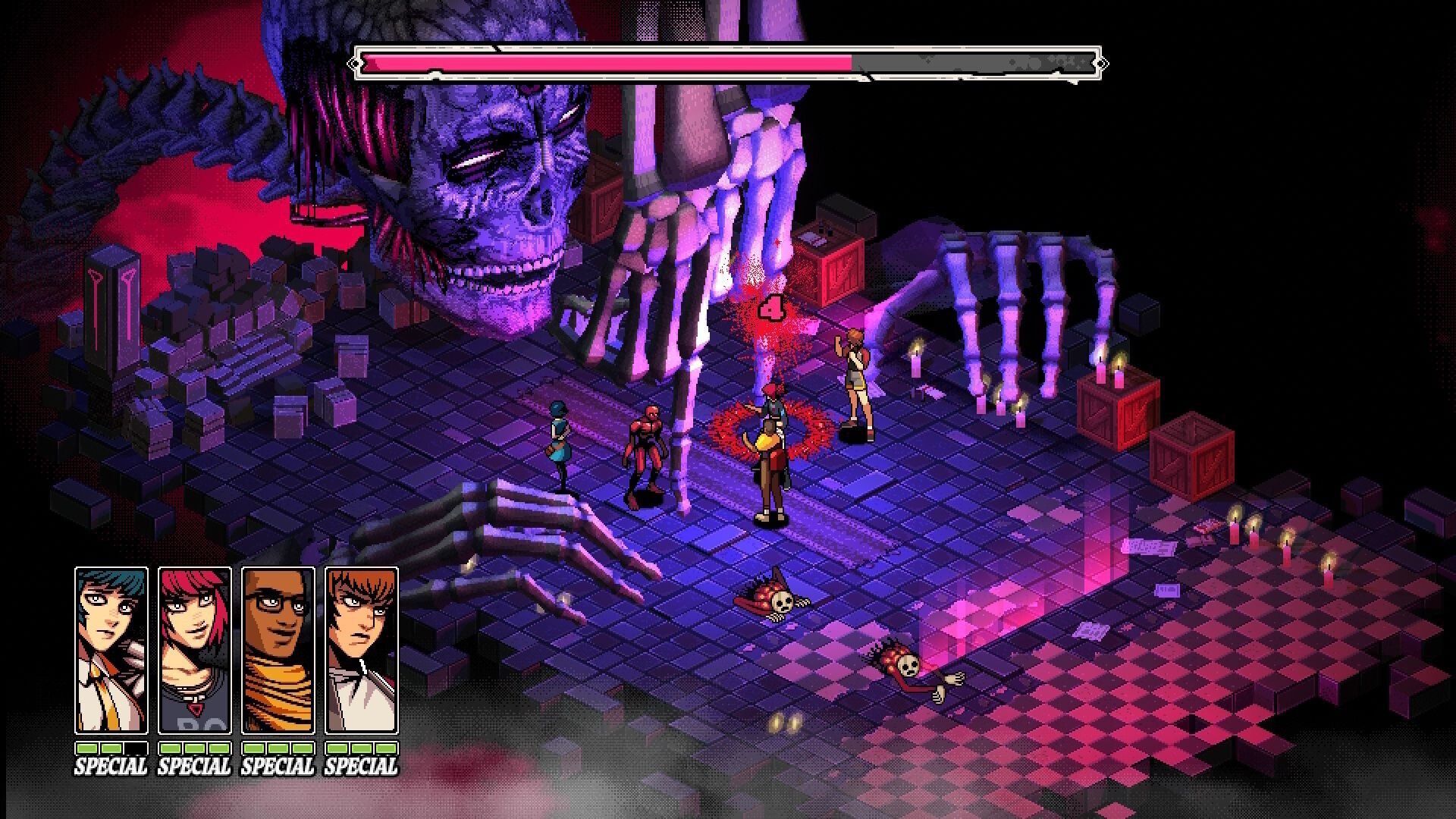
Look, at the end of the day, Demonschool is an indie game, and I need to keep that in mind when I talk about it. I’m not going to pull any punches with my review, but I can’t expect it to be as polished as a big-budget AAA game. Honestly, even though I didn’t totally click with the gameplay myself, I can see how this tactical RPG – it’s kind of like a puzzle game – could really grab some people, especially if you’re the type who loves to get every single Top Mark on every stage.
I really enjoyed the game’s unique and often unpredictable script, but it might not appeal to players who prefer a more intense, dark, or violent experience. Whenever the story got too serious, a funny comment from Destin or Jem would lighten the mood, which I thought was perfect. I was eager to see how the story ended, and it definitely delivered.
Closing Comments:
Demonschool is a strangely appealing game. While the combat started out fun, it became repetitive pretty quickly. Despite needing some motivation to see it through to the end, I ultimately found the experience rewarding. What really kept me engaged were the characters, the clever writing, and how the story unfolded. It’s not a revolutionary game, but if you like dark humor, challenging puzzles, and a demonic setting, it’s worth checking out.
Read More
- A Gucci Movie Without Lady Gaga?
- Nuremberg – Official Trailer
- Is Steam down? Loading too long? An error occurred? Valve has some issues with the code right now
- Where Winds Meet: March of the Dead Walkthrough
- BTC PREDICTION. BTC cryptocurrency
- Kingdom Come Deliverance 2’s best side quest transformed the RPG into medieval LA Noire, and now I wish Henry could keep on solving crimes
- Sonic Racing: CrossWorlds Review — An Arcade Kart Racer For Gearheads
- New Look at ‘Masters of the Universe’ Leaks Online With Plot Details Ahead of Trailer Debut
- Battlefield 6 devs admit they’ll “never win” against cheaters despite new anti-cheat system
- EUR KRW PREDICTION
2025-11-18 19:13